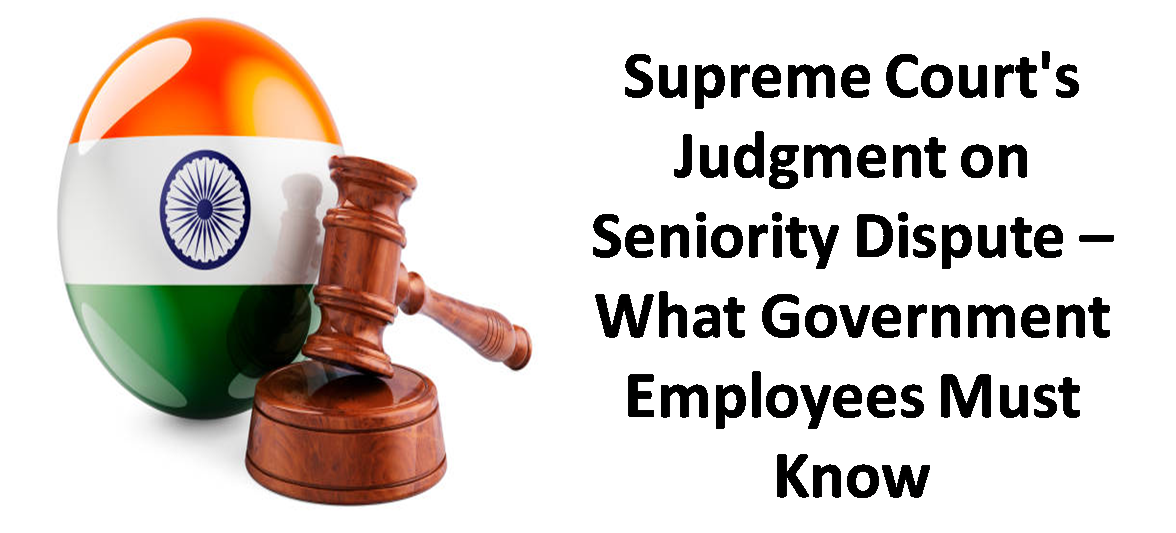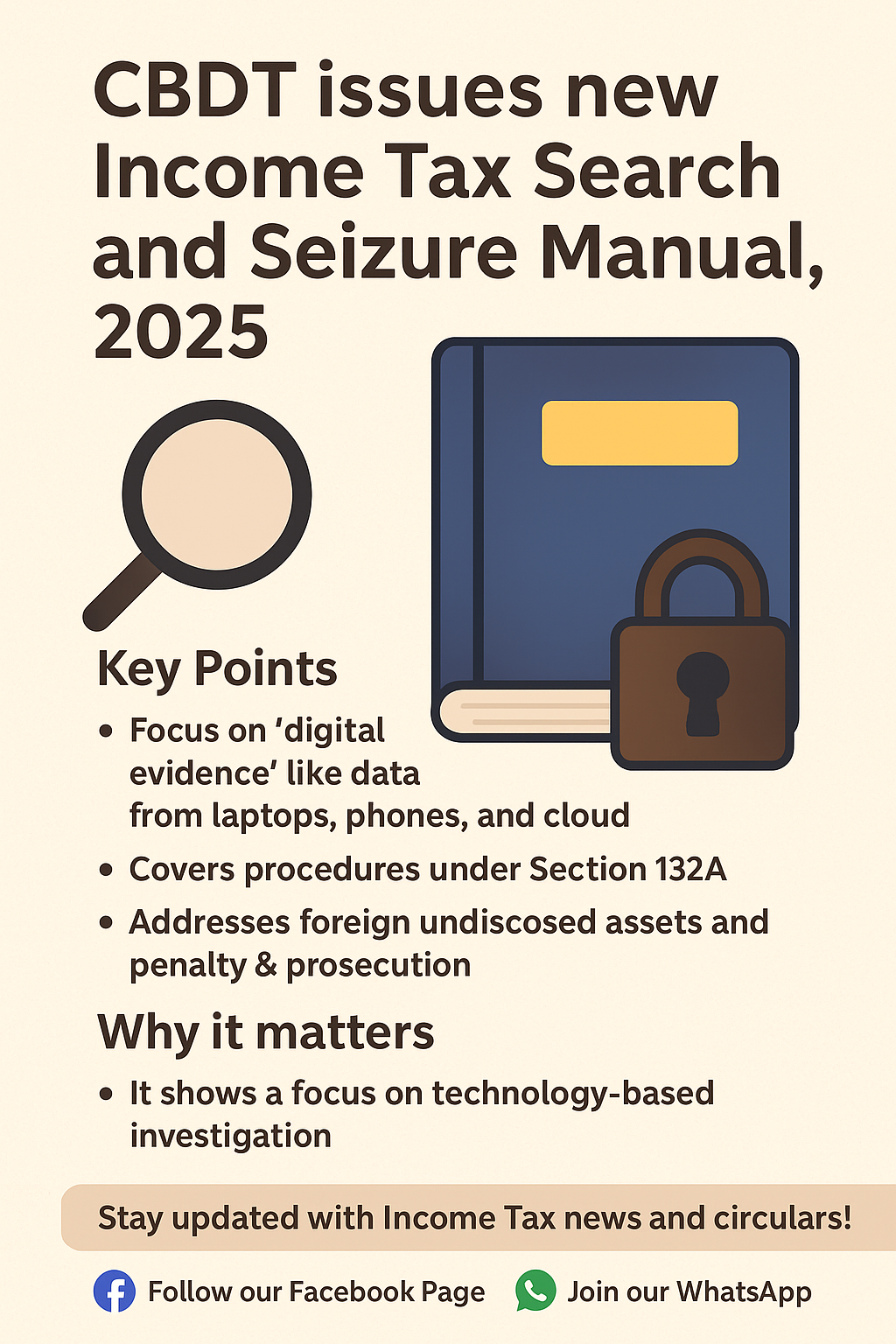
The Supreme Court delivered an important order in Hariharan & Others v. Harsh Vardhan Singh Rao & Others on 14 December 2022 which is termed as a case that has far reaching implication for government employees across India. The dispute focuses on one of the most debated topics in service law – “How to fix seniority between Direct recruits and Promotees.”
Background of the Case
In many government services, posts are filled through two streams namely Promotees (existing employees who are promoted to higher posts) and Direct recruits (candidates selected through competitive examinations). The question of who should rank senior in the same recruitment year has long been a source of litigation.
In 2012, the Supreme Court in the case of N.R. Parmar Vs. Union of India held that the seniority of direct recruits could be counted from the year of recruitment process initiation (From the date of notification) even if their offer of appointment orders were issued later. This judgment benefitted direct recruits.
However, in 2019, another Supreme Court bench in the case of K. Meghachandra Singh Vs. Ningam Siro overruled the judgment of N. R. Parmar and held that seniority must be counted only from the actual date of appointment favouring promotees.
This clash of precedents created widespread uncertainty and stalled promotions in many departments including the Income Tax Department in Gujarat which was the focus of the present case.
Supreme Court’s Observations
The bench of Justice S. Abdul Nazeer and Justice Abhay S. Oka noted that the continued operation of an interim “status quo” order had left almost one-third of posts vacant severely affecting administrative efficiency. To break the deadlock, the Court made two important directions as under;
i. Vacated the interim order so that promotions could go ahead and
ii. Clarified that the judgment of N.R. Parmar will continue to apply until 19 November 2019 & the judgment of K. Meghachandra Singh will operate prospectively from that date onwards.
Questions Referred to Constitution Benc
The Court recognized that the issue involves substantial questions of law of general public importance. Hence, it referred the following questions to a Constitution Bench of five judges:
a) Whether K. Meghachandra Singh can be treated as binding in view of earlier Constitution Bench rulings in Mervyn Coutinho (1975) and M. Subba Reddy (2004).
b) Whether, in the absence of specific rules, direct recruits (whose recruitment began in a particular year but concluded later) can be interpolated with promotees of that year under the rotation of quota principle.
Why This Matters
This case is not just a technical dispute about dates. Its outcome is as under;
- Impacted thousands of government employees in central and state services.
- Decideed whether direct recruits or promotees have an advantage in career progression.
- Provided clarity on how future recruitment rules should be framed to avoid endless litigation.
Conclusion
The Supreme Court’s order of 14 December 2022 is a classic example of judicial balancing as it protected not only past appointments but also ensured promotions without delay and at the same time recognized the need for a larger bench to settle the law. Until the Constitution Bench gives its final word, the rule is clear:-
- Before 19.11.2019 – Judgment of N.R. Parmar applies
- After 19.11.2019 – Judgment of K. Meghachandra Singh applies
This clarity, even if temporary, brings much-needed relief to departments struggling with vacancies and employees anxiously awaiting their rightful promotions.
“An important question arises as to why such disparities exist due to the application of a cut-off date. It is a reasonable expectation among the public that all employees should be treated equally without any distinction based on arbitrary cut-off dates across all periods. The Apex Court, in its consistent jurisprudence, has emphasized the need to decide matters based on substantial questions of law rather than procedural technicalities.”
Here’s why it happened in this case:-
1. Conflicting Precedents
- N.R. Parmar (2012) gave one interpretation of seniority rules (benefiting direct recruits).
- K. Meghachandra Singh (2019) took the opposite view (benefiting promotees).
If Meghachandra were applied retrospectively, it would undo thousands of promotions and seniority lists already finalized under N. R. Parmar. That would create massive administrative chaos and endless litigation.
2. Principle of Prospective Over-ruling
- The Supreme Court sometimes decides that a new analysis of law should apply only from the date of the new judgment onwards not backwards.
- By this way, the principle of law is clarified for the future but past actions based on earlier binding law remained protected.
- This tool ensures balance legal certainty with fairness to those who acted under earlier rulings.
3. Why Prospective Operation Here?
- Between 2012–2019, Parmar was the binding precedent. Government departments had already applied it and fixed seniority.
- If Meghachandra were applied to that past period, all those finalized lists, promotions, and retirements would have to be reopened. So the Court said;
- Till 19.11.2019 → follow Parmar (to protect vested rights and avoid chaos).
- After 19.11.2019 → follow Meghachandra (to ensure legal clarity going forward).
However, most employees still believe that a uniform rule should apply to all periods means one rule should apply across the board. In short, the difference by date is a judicial compromise – not because the law itself is different in different periods but because the Court wanted to avoid unsettling past settled rights while still correcting the legal interpretation for the future.



